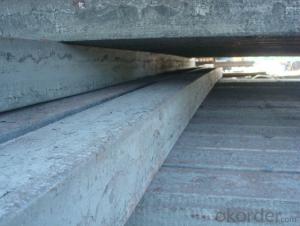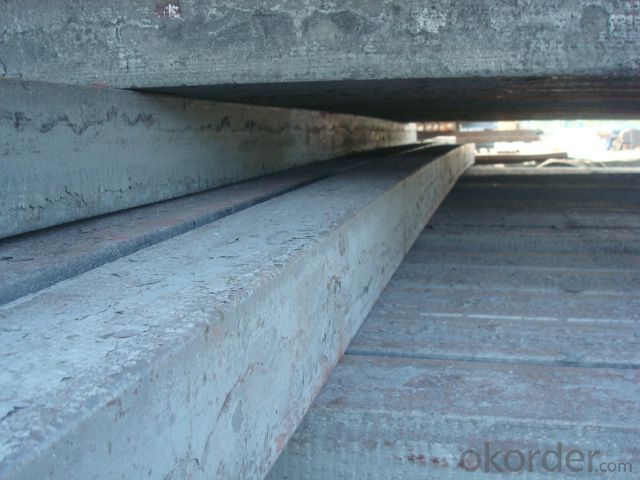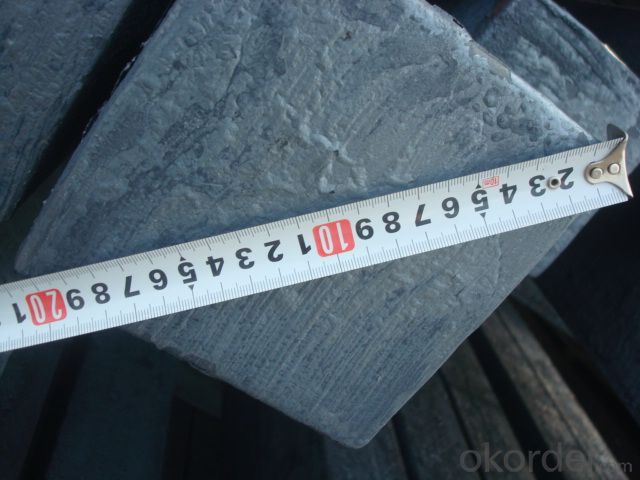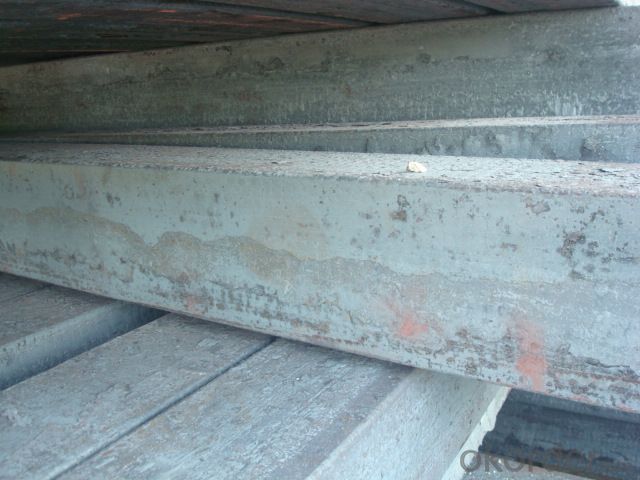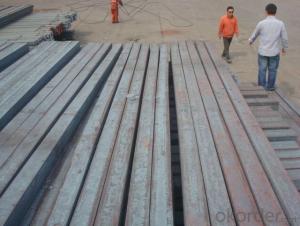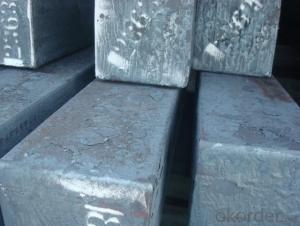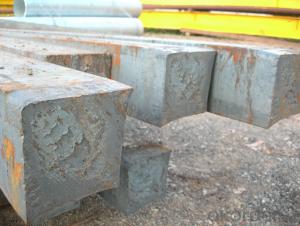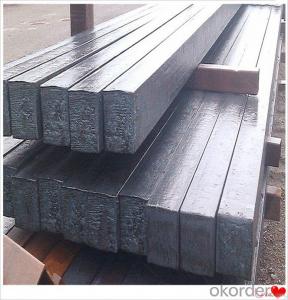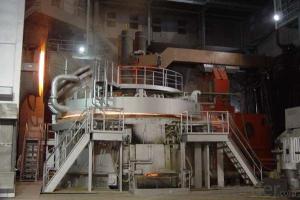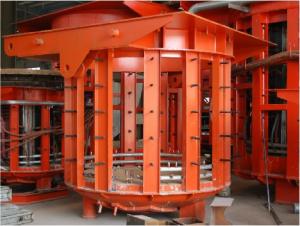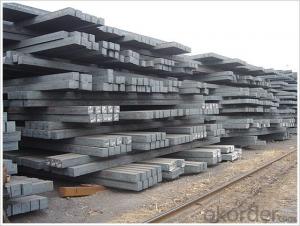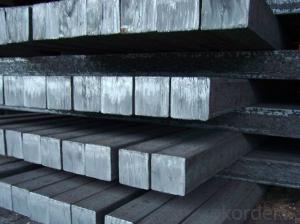Blast furnace billet steel for size 50mm-180mm
- Loading Port:
- Tianjin
- Payment Terms:
- TT OR LC
- Min Order Qty:
- 1000 m.t.
- Supply Capability:
- 30000 m.t./month
OKorder Service Pledge
OKorder Financial Service
You Might Also Like
STEEL BILLET
1.Brief description
Steel billet(ingot) by cogging or breakdown of semi-finished products, is the raw material of all kinds of steel mill. Billet section of square, round, flat, rectangular and abnormity of several kinds of, mainly related to the shape of rolled products.
2.Features
Rectangular billet continuous casting billet and mainly general carbon steel, low carbon low silicon cold-rolled material, high quality carbon structural steel, high strength low alloy steel, special steel, etc.
The billet is mainly divided into two kinds from the shape:
Slab: cross section width and height of the ratio of the larger, mainly used for rolling plate.
Billet: equal cross section width and height, or a huge difference, mainly used for rolling steel, wire rod. ,
Steel billets have distinct characteristics as compared with already furnished steel bars and products. Billets have a specific grain structure, which enables the metal to be processed more intricately. Steel billets are also known for their malleability and ductility, especially when exposed to varying temperatures during shaping and molding.
3.Processing
Steel billets are considered fresh and raw, and they must undergo a series of manufacturing processes before they can be used for various purposes. Billets are made by means of freezing molten liquid, and are later exposed to extremely low temperatures in order to allow the metal to take shape and solidify in chemical structure. The temperature manipulates the metal's physical properties, and tones its strength and durability. The subsequent processes provide the metal's curved mold design so that it can fit the allotted space provided by other machines, which complete the finishing procedures.
4.Pictures
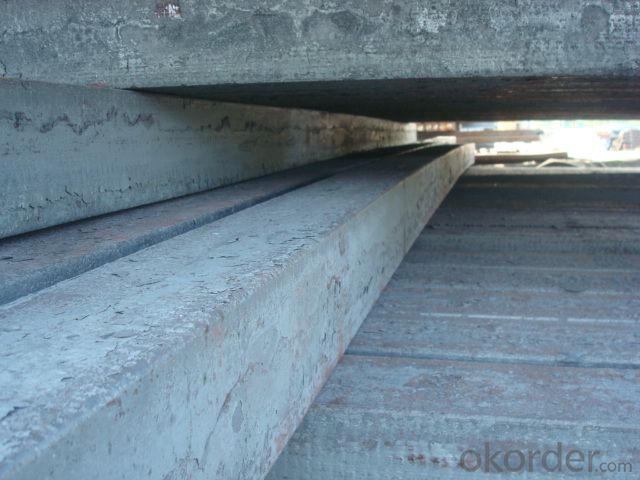
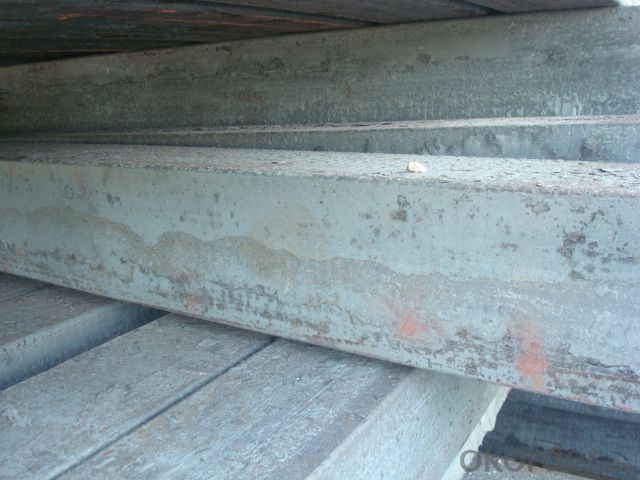
5.Usage
Billets, or ingots (as they sometimes referred to), are not of practical use until they have been formed into more functional shapes and sizes. While they have already been put in the furnace, they still require a series of shaping and molding procedures such as hot and cold working, milling and cutting before they are sold in hardware stores, or used for different applications. The unformed billets, however, can be used in striking currency such as coins and as reserves, similar to gold bars.
6.Detailed specification
Hot rolled billet steel
Size: 50x50mm-180x180mm
Steel Grade: 3SP, 5SP,Q195,Q235,Q255,Q275 Length:3m-12m
MOQ: 1000MT/size
Payment term: TT or LC
Packing: in bulk , bundle
Shipment: by container , bulk vessel
Packaging Details: bundles with steel strips or as customers's requirements
Delivery time: 15-30 days after the deposit
Loading port:Tianjin, or other port China
Origin : China
Inspection:Third party inspection before loading.
- Q: What are the major steel billet producing countries?
- The major steel billet producing countries are China, India, Russia, Japan, and the United States. China is by far the largest producer of steel billets, accounting for over half of the global production. This is due to the country's massive steel industry, which has experienced significant growth in recent decades. India is the second-largest producer, with a rapidly expanding steel sector as well. Russia is known for its strong steel industry and is the third-largest producer. Japan, although its steel production has declined in recent years, still remains a significant player in the steel billet market. Lastly, the United States is a major producer of steel billets, with a focus on high-quality specialty steel products. These countries play a crucial role in meeting the global demand for steel billets, which are essential raw materials for various industries, including construction, automotive, and infrastructure.
- Q: How are steel billets manipulated during the manufacturing process?
- To transform steel billets into usable steel products, various manipulation techniques are employed during the manufacturing process. These techniques comprise heating, rolling, forging, and cutting. The initial step involves heating the steel billets in a furnace to achieve a specific temperature known as the rolling temperature. This heating process is crucial as it enhances the billet's malleability and reduces its brittleness, making it easier to manipulate. Once the billets are adequately heated, they undergo a series of passes through rolling mills. These mills exert pressure on the billets, causing them to elongate and take on the desired shape. The rolling process can be performed using either hot or cold methods, depending on the requirements of the final product. Hot rolling is typically employed for large-scale production, while cold rolling is more commonly used for precision applications. Another technique used to manipulate steel billets is forging. This method involves subjecting the billets to compressive forces using hammers or presses. Through forging, the strength of the billets is enhanced, their grain structure is improved, and their mechanical properties are refined. Forged steel billets find application in industries such as automotive and aerospace, where high strength and resistance to impact and fatigue are crucial. Cutting is also an essential technique employed during the manufacturing process. Steel billets are cut into desired lengths using saws or shears. This step ensures that the billets are converted into manageable sizes suitable for further processing or to meet specific customer requirements. In conclusion, the manufacturing process of steel billets involves several manipulation techniques. These include heating, rolling, forging, and cutting. Each of these methods contributes to shaping the raw billets and modifying their properties, making them suitable for use in various industries such as construction, manufacturing, and transportation.
- Q: What are the main applications of steel billets in the aerospace industry?
- Steel billets are an essential component in the aerospace industry, finding numerous applications due to their exceptional strength, durability, and thermal properties. One of the main applications of steel billets in the aerospace industry is in the production of aircraft structural components. These billets are commonly used to manufacture critical parts such as landing gear, wing spars, fuselage frames, and engine mounts, providing the necessary strength and stability required for safe and efficient flight. Moreover, steel billets are also utilized in the aerospace industry for the production of engine components. Due to their high heat resistance and ability to withstand extreme temperatures, steel billets are used to manufacture turbine blades, shafts, and other critical parts within jet engines. These components must withstand intense heat and pressure, and steel billets offer the necessary properties to ensure reliable and efficient engine performance. Additionally, steel billets play a crucial role in the aerospace industry through their application in the production of fasteners and connectors. These components are vital for securely joining various parts of an aircraft, ensuring structural integrity and safety during flight. Steel billets are used to manufacture high-strength bolts, screws, and other fasteners, providing the necessary strength and reliability for aerospace applications. Furthermore, steel billets are often employed in the aerospace industry for the production of hydraulic and pneumatic systems. These systems are responsible for controlling the aircraft's movement, landing gear operation, and other crucial functions. Steel billets are used to manufacture hydraulic cylinders, valves, and tubes, offering the necessary strength and resistance to withstand high pressures and extreme conditions. In summary, the main applications of steel billets in the aerospace industry include aircraft structural components, engine parts, fasteners and connectors, as well as hydraulic and pneumatic systems. Their exceptional strength, durability, and thermal properties make steel billets indispensable for ensuring the safety, efficiency, and reliability of aerospace operations.
- Q: What are the different methods of steel billet cutting and machining?
- There are several methods of steel billet cutting and machining, including bandsaw cutting, flame cutting, plasma cutting, water jet cutting, and machining processes such as milling, drilling, and turning. Each method has its own advantages and is chosen based on factors like the desired shape, accuracy, speed, and cost-effectiveness of the cutting or machining operation.
- Q: What is the chemical composition of steel billets?
- Steel billets typically contain iron as the primary element, along with varying amounts of carbon, manganese, silicon, sulfur, and phosphorus, which make up its chemical composition. The specific grade and intended use of the steel billets determine the exact composition, which may vary. Carbon, in small quantities ranging from 0.02% to 0.5%, is included to enhance the steel's strength and hardness. Manganese is commonly added to improve toughness and hardenability, while silicon aids in deoxidizing the metal and increasing its strength. Sulfur and phosphorus, impurities that can adversely affect the steel's mechanical properties, are typically kept at low levels. Furthermore, chromium, nickel, molybdenum, and other elements may be added in small amounts to enhance specific properties such as corrosion resistance or high-temperature strength.
- Q: How do steel billets contribute to the manufacturing of sports equipment?
- Steel billets contribute to the manufacturing of sports equipment in various ways. Firstly, steel billets are the raw material used to produce steel bars and rods, which are then used to create the frame and structure of sports equipment such as golf clubs, tennis rackets, and hockey sticks. The strength and durability of steel make it an ideal material for these applications, as it can withstand the high impact forces and stresses that occur during sports activities. Additionally, steel billets are also used to manufacture components of sports equipment such as weights, dumbbells, and barbells. These components require a high density material that can handle heavy loads, and steel provides the necessary strength and stability. Furthermore, steel billets are used in the production of sports equipment accessories like ball bearings, springs, and fasteners. These small yet crucial components play a vital role in the overall performance and functionality of sports equipment. Steel's excellent corrosion resistance and ability to withstand extreme conditions make it a preferred choice, ensuring long-lasting and reliable performance. Moreover, steel billets contribute to the manufacturing of sports equipment by enabling the production of high-quality and precision-made parts. Steel's malleability and formability allow it to be shaped into various complex designs and configurations, ensuring that sports equipment meets the specific requirements of athletes and performs optimally. In summary, steel billets are an indispensable component in the manufacturing of sports equipment. Their strength, durability, versatility, and formability make them an ideal material for producing frames, components, and accessories that enhance the performance and longevity of sports equipment.
- Q: What are the different heat treatment processes for steel billets?
- There are several different heat treatment processes that can be used for steel billets, each with its own purpose and benefits. Some of the common heat treatment processes for steel billets include annealing, normalizing, quenching, tempering, and case hardening. 1. Annealing: This process involves heating the steel billets to a high temperature and then slowly cooling them to room temperature. The purpose of annealing is to reduce the hardness of the steel, improve its machinability, and relieve internal stresses. It also helps in refining the grain structure, making the steel more ductile and less brittle. 2. Normalizing: In normalizing, the steel billets are heated to a temperature above the critical range and then cooled in still air. This process is used to refine the grain structure, improve mechanical properties, and enhance machinability. Normalizing also helps in relieving internal stresses and achieving uniformity in microstructure. 3. Quenching: Quenching involves rapidly cooling the steel billets by immersing them in a quenching medium such as oil, water, or brine. This process is designed to harden the steel by transforming the austenite phase into martensite. Quenching results in a hard and brittle steel with improved wear resistance, but it also introduces residual stresses and the potential for cracking. 4. Tempering: After quenching, the steel billets are often tempered to reduce brittleness and improve toughness. Tempering involves reheating the quenched steel to a lower temperature and holding it for a specific period of time. This process helps in relieving stresses, reducing hardness, and improving ductility without sacrificing too much strength. 5. Case Hardening: Case hardening is a process used to increase the surface hardness of steel billets while maintaining a tough and ductile core. There are different methods of case hardening, such as carburizing and nitriding. Carburizing involves introducing carbon into the surface of the steel by heating it in a carbon-rich environment, while nitriding introduces nitrogen to form a hard nitride layer on the surface. These processes enhance wear resistance and extend the lifespan of the steel billets. These heat treatment processes for steel billets offer manufacturers the ability to tailor the properties of the steel to meet specific application requirements. By carefully selecting and implementing the appropriate heat treatment process, the resulting steel billets can exhibit a wide range of mechanical properties, such as hardness, strength, toughness, and wear resistance.
- Q: What are the potential applications of steel billets in the telecommunications industry?
- Steel billets have a wide range of potential applications in the telecommunications industry. One of the key applications is in the construction of telecommunication towers. Steel billets can be used to manufacture the structural components of these towers, providing strength and durability to support the weight of antennas and other equipment. Additionally, steel billets can be utilized in the production of transmission line hardware such as pole line fittings, brackets, and clamps. These components are crucial in the installation and maintenance of telecommunication lines, ensuring their stability and reliability. Moreover, steel billets can be employed in the manufacturing of underground and overhead enclosures for telecommunication cables. These enclosures protect the cables from external factors such as moisture, heat, and physical damage, ensuring uninterrupted communication. Steel billets also find application in the production of telecommunication equipment cabinets and racks. These cabinets provide a secure and organized space for housing network equipment such as servers, switches, and routers. The strength and rigidity of steel billets make them ideal for supporting heavy equipment and providing protection against environmental hazards. Furthermore, steel billets can be utilized in the construction of telecommunication infrastructure, such as base stations and equipment shelters. These structures require robust materials to withstand harsh weather conditions and provide a stable foundation for the installation of telecommunications equipment. In summary, the potential applications of steel billets in the telecommunications industry are vast and encompass various aspects, ranging from tower construction to cable enclosures and equipment cabinets. The strength, durability, and versatility of steel make it an ideal material for supporting and protecting telecommunication infrastructure and equipment.
- Q: How are steel billets used in the manufacturing of construction scaffolding?
- Steel billets are an essential raw material used in the manufacturing of construction scaffolding. These billets are initially heated and then passed through a series of rolling mills to achieve the desired shape and size for scaffolding components. Once the steel billets are rolled into the required shape, they are further processed to create various scaffolding parts, such as tubes, couplers, frames, and planks. These parts are then assembled to form the scaffolding structure that provides a safe and sturdy platform for workers to perform tasks at elevated heights during construction projects. The use of steel billets in the manufacturing of construction scaffolding offers several advantages. Firstly, steel is known for its exceptional strength and durability, making it an ideal material for scaffolding. Additionally, steel is resistant to corrosion and can withstand harsh weather conditions, ensuring the scaffolding remains reliable and safe throughout the construction process. Moreover, steel scaffolding is highly versatile and can be easily customized to fit different project requirements. The use of steel billets allows manufacturers to create scaffolding components of various sizes, shapes, and configurations to accommodate different construction needs. In conclusion, steel billets play a crucial role in the manufacturing of construction scaffolding. By utilizing these raw materials, scaffolding manufacturers can produce durable, reliable, and customizable scaffolding structures that enhance safety and efficiency on construction sites.
- Q: What are the future trends in steel billet production?
- Some of the future trends in steel billet production include advancements in automation and robotics, increased use of renewable energy sources in the production process, implementation of more efficient and sustainable production techniques, and the development of new alloys and materials to enhance the performance and strength of steel billets. Additionally, there is a growing focus on reducing carbon emissions and improving the overall sustainability of steel production, leading to the exploration of greener technologies and practices in the industry.
Send your message to us
Blast furnace billet steel for size 50mm-180mm
- Loading Port:
- Tianjin
- Payment Terms:
- TT OR LC
- Min Order Qty:
- 1000 m.t.
- Supply Capability:
- 30000 m.t./month
OKorder Service Pledge
OKorder Financial Service
Similar products
Hot products
Hot Searches
Related keywords
